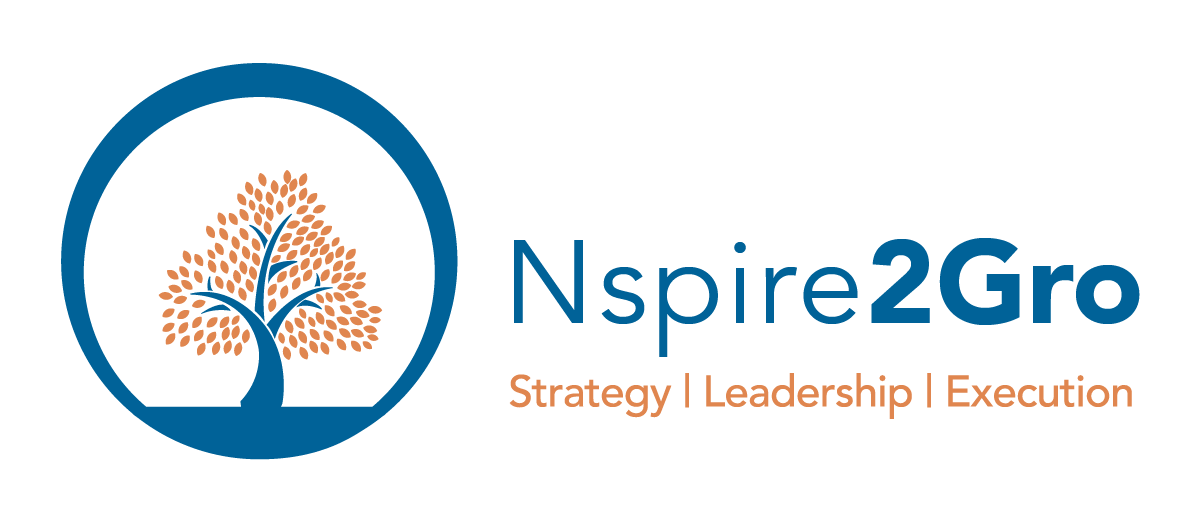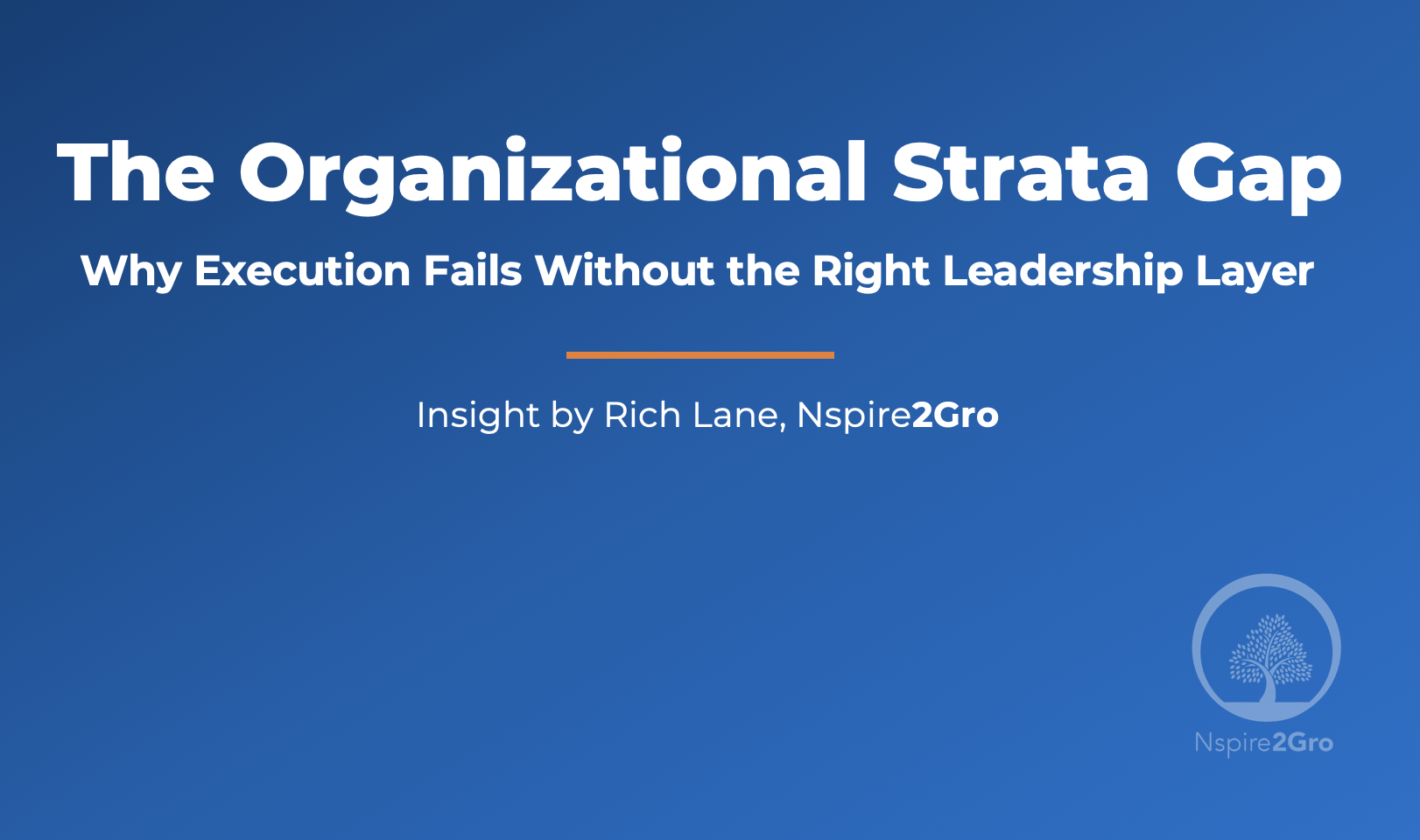As a founder or CEO, you’ve built your company by making things happen. But as your business grows, the work changes—and so do the demands on your leadership team. Execution starts to falter, priorities slip, and decisions get delayed. It’s not always obvious why. You have good people. You have strategy. But something’s off.
Often, the root cause lies in the strata of your organization—the layers of leadership and decision-making needed to turn vision into results. If you don’t have the right structure at the right level, everything slows down.
Understanding these strata—and filling the gaps between them—is essential for companies in growth mode. And that’s exactly where a Fractional Integrator or COO can make a transformative difference.
What Are Organizational Strata?
The concept of “Strata” comes from the work of Elliott Jaques and is expanded by organizations like Ninety.io. Think of strata as horizontal layers in your org chart, each representing a level of leadership, complexity, and decision-making authority.
Each stratum has a Time Span of Responsibility (TSR)—how far into the future the person in that seat needs to plan, execute, and be accountable. Here’s a simplified breakdown:
- Stratum 1 (S1): Task execution (up to 3 months)
- Stratum 2 (S2): Team leadership and process refinement (3–12 months)
- Stratum 3 (S3): Department leadership, operational planning (1–2 years)
- Stratum 4 (S4): Strategic leadership across functions (2–5 years)
- Stratum 5 (S5): Visionary leadership and long-term direction (5–10 years)
In early-stage companies, the CEO may straddle S4 and S5. But as the business scales, gaps in strata—especially around S3 and S4—can cause breakdowns in execution.
The Real Problem: Missing the Middle
Here’s what this looks like in practice:
- The CEO is still driving operations while trying to lead strategy.
- Department heads lack alignment and push their own priorities.
- Issues bounce between teams with no clear ownership.
- Goals get set but don’t cascade effectively through the org.
- Decisions are slow because no one is bridging the gap between vision and execution.
You’ve outgrown your informal operating structure, but you haven’t yet filled the missing strata with leadership equipped to manage across time horizons and functions.
That’s where a Fractional Integrator fits.
The Integrator’s Role in Bridging Strata
An Integrator sits in Stratum 4—connecting the high-level vision (S5) of the CEO with the executional layers (S2/S3) of the leadership team.
This role isn’t about being a taskmaster. It’s about:
- Translating the strategic plan into actionable priorities
- Aligning the leadership team around clear Rocks and KPIs
- Leading cross-functional meetings that drive accountability
- Resolving issues that get stuck between departments
- Ensuring your systems, processes, and people are all pointed in the same direction
In short, a good Integrator helps you run the business, so you can lead the business.
Why Fractional Makes Strategic Sense
Hiring a full-time COO may not be practical—or even necessary—at your current stage. But doing nothing is riskier. A fractional Integrator gives you experienced operational leadership without the full-time commitment.
Here’s what you gain:
- Stratum 4 competency without Stratum 5 dilution
You stay focused on growth and future vision while your Integrator runs day-to-day execution. - Accelerated clarity and rhythm
With clear meeting cadences, aligned goals, and transparent dashboards, your team starts operating with focus and urgency. - Better leadership team cohesion
Silos break down. Communication improves. Issues get raised, discussed, and resolved—quickly. - A bridge to your future org chart
As you scale, your fractional Integrator helps you build the team, structure, and habits you’ll need for long-term success.
Most CEOs say the same thing after bringing on an Integrator:
“I wish I’d done this a year earlier.”
Where the Gaps Usually Show Up
Not sure if you have a strata gap? Here are the signs:
- You’re still attending or leading every leadership meeting
- Your SLT members don’t own cross-functional initiatives
- Your Rocks and quarterly goals aren’t moving forward
- Team leads aren’t resolving issues without escalation
- You’re answering the same questions over and over
These aren’t people problems. They’re structure problems. Your team may be talented, but if no one is coordinating at the right level of work, the organization loses momentum.
From Founder-Dependent to Function-Led
The leap from a founder-dependent business to a scalable organization isn’t about replacing the founder. It’s about building the right structure, then placing the right leaders in the right seats—especially in the middle strata.
You don’t need to overhaul your company. But you do need someone who can help you design and lead an operating system that works at scale.
That’s what we do at Nspire2Gro.
How Nspire2Gro Helps Fill the Strata Gap
At Nspire2Gro, we serve as fractional Integrators and COOs for growing businesses that need operational leadership but aren’t ready (or don’t want) to hire full-time.
We step into the Stratum 4 layer—bridging strategy and execution—and help:
- Build and evolve your org chart for the next 6–12 months
- Lead your senior team through quarterly planning and accountability cycles
- Translate your vision into operational structure, scorecards, and cadences
- Coach your leadership team to work as a true unit
- Free up the CEO to focus on vision, growth, and culture
Sometimes we’re brought in for 6–12 months during a growth surge. Other times, we stay involved for years, evolving our role as the business matures.
What we don’t do is offer advice from the sidelines. We integrate. We lead. We execute.
Final Thought for CEOs
If you’re feeling the strain of growth, it’s not a reflection of your leadership—it’s a reflection of your structure.
Your business has entered a new stage. It needs a different kind of leadership at the operating layer. One that can execute your vision, align your team, and give you space to lead at the level you were meant to.
You don’t have to figure that out alone.
Let’s talk.
We’ll help you assess your current structure, identify the strata gaps, and build a clear plan for how to fill them—fractionally, flexibly, and effectively. Reach out to us here.

